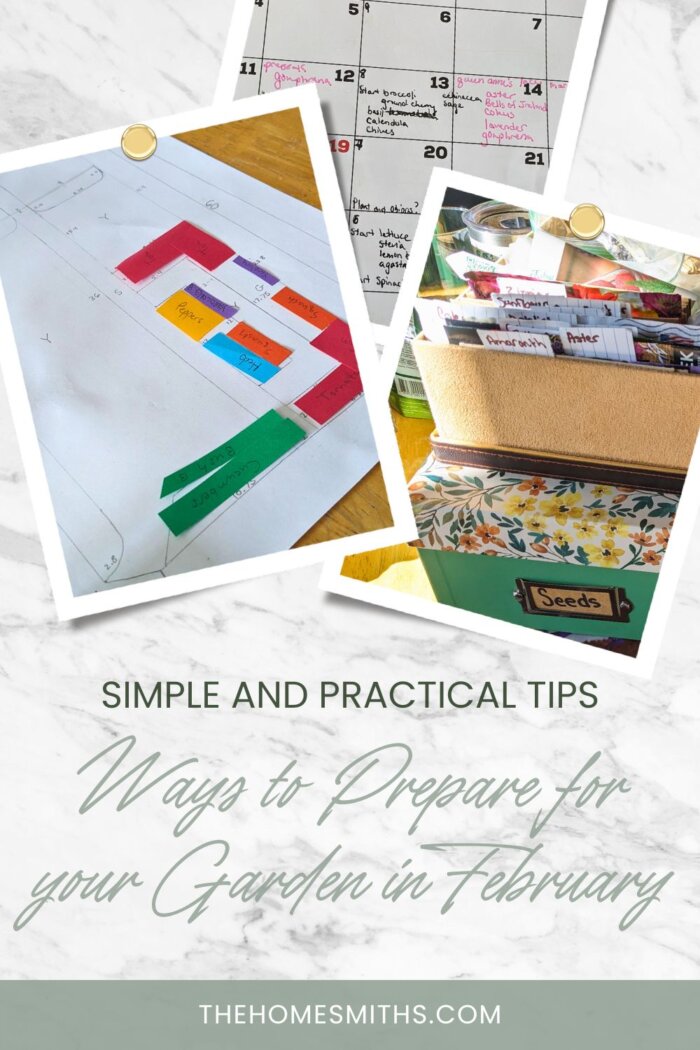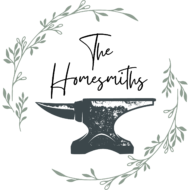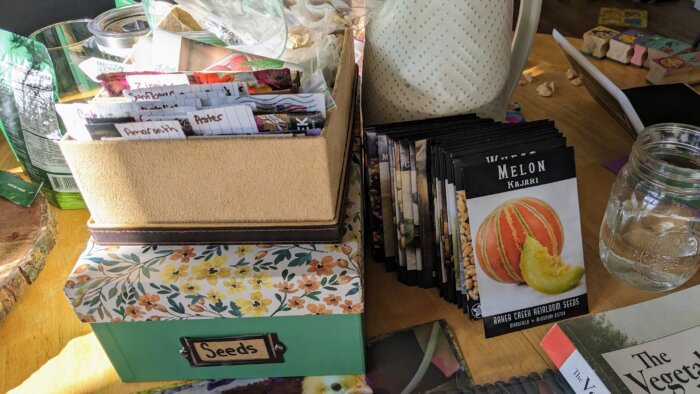Tending a garden throughout the spring and summer is a fun task and a lot of work! Learning the ways to prepare for your garden in February can help make the process smoother and more efficient. Here are some of our best tips and advice!

Why plan for your garden in February?
If you start planning for your garden in February, you are making sure to be prepared. When you are prepared, you can prevent overspending, overbuying, overplanting, and underplanting!
It also helps to alleviate winter blues, and in general, improve your mood!
How much time do you need to plan a garden?
How much time you need to plan a garden correlates to what you want out of it. If you are doing a small garden that you only want one or two things out of, you hardly need any time at all. However, if your goal is to create a food source that will replace at least a portion of your store-bought groceries, it will take you a lot longer.
Just remember, you get out of it what you put into it!
For us, our goal is to produce all of the tomato products we need the whole year, and not have to buy vegetables each winter. This means that I spent about three hours scheduling when everything gets started inside and/or planted and transplanted outside. Then Bennett and I spent about five hours planning exactly how many of each plant we wanted to plant and where in the garden it should be located.
This does not include all of the time that we spent shopping for seeds or the time we still need to spend buying and ordering supplies for the garden.
When should you start planning your garden?
Now! Yesterday! 6 months ago! I’m only kind of kidding. Whenever you decide that you want a garden, you should start planning your garden. Keep a notebook or a note on your phone of thoughts, ideas, likes and dislikes, etc.
In the middle of August, I’m taking notes about which tomato plants I liked the best and why to decide what I want for the next year. Check out the tomatoes we grew post and see what I mean!
The summer is a great time to start planning the next year’s garden visually. We learned last year that where we planted our amaranth did not work for our flower garden because it blocked the sun. I would not have known or thought of that because I didn’t know they could grow that large when I first planted them!
What supplies do you need to plan a garden?
A pen and paper and a calendar are the bare minimum you need to plan a garden. You can pay for a garden planning app but I never have. You can use your phone notes app or a notebook. Whatever is readily available. I got a free calendar from our local grocery store and used that for recording when to plant things. I like things written out on paper but if you’re more of a digital person, utilize what you have!
Stay tuned for a post that Bennett is writing about how to create a to-scale drawing of your garden and yard!
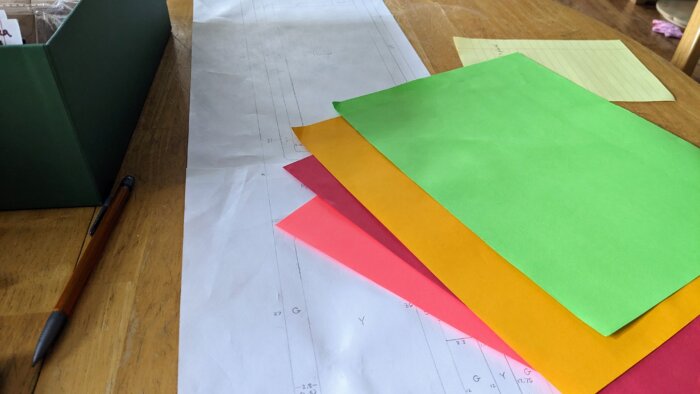
Disclosure: Some of the links below are affiliate links. This means that, at zero cost to you, The Homesmiths will earn an affiliate commission if you click through the link and finalize a purchase.
How to prepare for your garden in February:
Below is our advice and recommendations for how to prepare for your garden in February. These are not necessarily in any particular order. Start where you can and go for it. I haven’t been gardening for very long, but it is one of the most rewarding and fun things that we do. Bennett and I look forward to it all year. I hope that this information is informative and encouraging. Let us know how you feel about gardening and when you start preparing for your garden!
Plan what plants you want in your garden
This is such a broad piece of advice. It can take a while to think through this which is why I say that you should start planning your garden as soon as you know that you want one.
Think through your reasons for gardening. Do you want flowers for cutting or just a flower garden? Is there a specific type of produce that you would like to grow a lot of in your garden? Are you growing for the sake of fresh summer eating, or food preservation? Do you want herbs or teas? Would you prefer plants that come back every year or plants that you plant out each season?
Order seeds
Once you know what plants you want, you can shop for different varieties of seeds. Read about the different varieties and what they are used for. Look at different colors and sites that you can purchase from. You can always order seeds from Amazon, or go to any local stores and buy seeds. We love the rare and unique varieties of plants, so we tend to buy from Baker’s Creek.
Last year for my birthday, Bennett bought me flower seeds from Floret, and I think they are beautiful.
If you don’t have money to spend, look online for free seeds or local seed swap days. Tell people you’re close to that you’re interested in seed starting this year. Ask them to pass it around and to let you know if they have seeds that they are willing to pass off for free or cheap. Utilize your community!
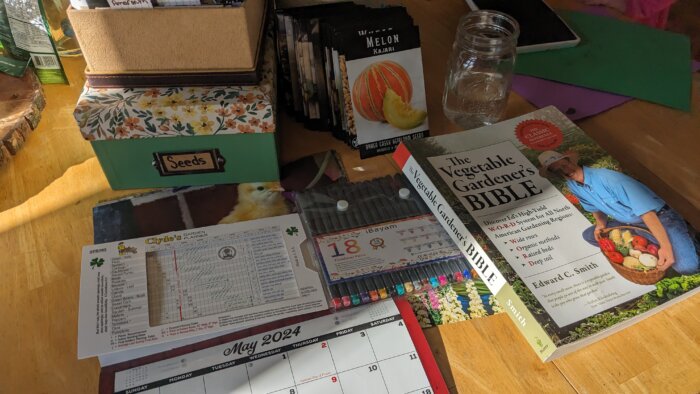
Plan your garden layout
This can be a little tricky if you’ve never gardened before. Every plant has a recommended spacing for how far apart your plants should be planted. Some plants do great next to others and other plants are terrible to plant next to each other. We highly recommend the Vegetable Gardener’s Bible to learn about each individual plant and its needs.
Some plants will be completely done growing in early summer so you can plant out a different plant that does better in the heat when those come up.
Having at least a general idea of how big your garden is so that you know how many of your plants you can fit in each space is a great thing to do in February.
If you don’t have garden beds, know how many pots and planters you need for each plant and where you are going to place them.
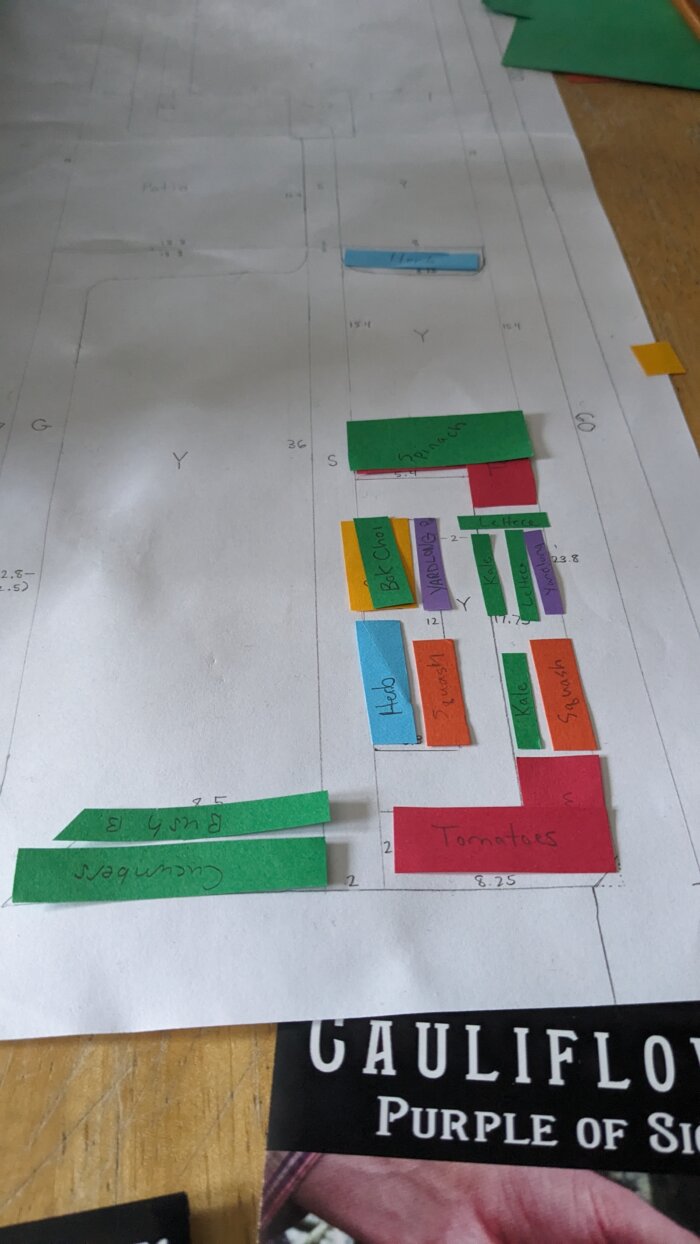
Schedule on a calendar when you will start your seeds.
You can use a physical calendar or a digital one for this. You do need to know when your last expected frost date is. You can search online for “last expected frost date for [insert your zip code]”. When you have that information, then you can work backward on your calendar. Typically you will want to track to about 12 weeks before your last frost date. As far as I understand, that’s the earliest you tend to start plants indoors.
On my calendar, all of the produce plants I wrote in a black pen and all of the flowers I wrote in pink. You can color-coordinate it to your preference.
Schedule on a calendar when you will transplant your seeds outside.
Just like you have to plan when you start your seeds indoors, you should note when to transplant them outdoors.
A lot of them will go out after the last predicted frost date, but some plants will not go out until you’ve had temperatures sustained at a certain point for a certain number of days. Others will go out up to several weeks before the last predicted frost date.
Also, some plants are not recommended to start indoors because they do not handle transfer or root disturbance well. Note that on your calendar too!
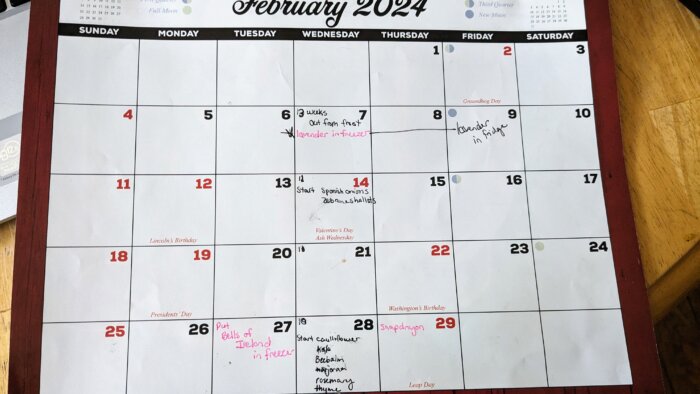
Create a garden to-do list, shopping list, and budget.
This is something that if you do not do with your spouse, you should have prepared to present at a family meeting. Gardening does not need to be expensive but it can be. It also is time-consuming. It is only fair that everyone in the household is aware of anticipated time commitments and costs.
Things to consider the cost of include:
- Seeds
- Soil
- Compost
- Tools
- Raised bed material (Check out our DIY Raised Beds!)
- Plant starting pots and trays
- Trellises or arches (Check out our cheap DIY trellis!)
- Hoses or hose nozzle replacements
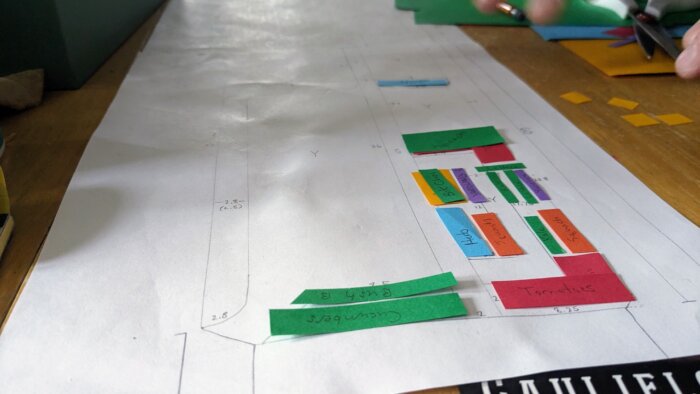
Cold stratification or presoaks for the seeds that need it
Some plants benefit from a period of cold before planting in soil. If you have any seeds like this, you should consider getting them into the refrigerator or freezer this month. I put my lavender seeds in the fridge at the beginning of February and will be putting my Bells of Ireland seeds in the fridge at the end of the month.
Some seeds like Gomphrena, benefit from soaking in water for 24 hours before planting. All of these things should be noted on your calendar so that you don’t forget!
In conclusion, there are many ways to prepare for your garden in February. If you’re getting started later, that’s fine! You can catch up! A garden is worth all of the time and effort that you put into it. We have found that whatever time and effort we put into it, we get well more than that back many times over throughout the spring and summer.
Let us know if you are planning a garden and what you like to prepare for in the comments below. Happy planning!
Save it for later!
